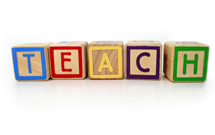 To make sure students graduate from high school prepared to tackle whatever path they choose, teacher preparation must focus on making today’s education system a learner-centered instructional model, supported by proven digital learning technology that gives students a more individualized and rigorous learning experience, said a panel of experts during an Alliance for Excellent Education webinar.
To make sure students graduate from high school prepared to tackle whatever path they choose, teacher preparation must focus on making today’s education system a learner-centered instructional model, supported by proven digital learning technology that gives students a more individualized and rigorous learning experience, said a panel of experts during an Alliance for Excellent Education webinar.
The webinar was based in part on “Culture Shift: Teaching in a Learner-Centered Environment Powered by Digital Learning,” a 2012 Alliance report that advocates for a shift in the teaching culture to ensure that students graduate from high school ready to enter college or the workforce. It also was the second in a two-part webinar series on this same topic.
See also:
“Moving teacher education forward—what does that really mean? What it means to be in a digital age is that we are now in an open learning ecosystem,” said Tom Carroll, president of the National Commission on Teaching and America’s Future (NCTAF). “Now school is no longer the [only] learning place—schools and classrooms are among many in a network of learning spaces.”
NCTAF’s Teachers Learning in Networked Communities (TLINC) initiative aims to close the gap between teacher preparation and practice by encouraging collaboration in teacher preparation programs, increasing communication between these programs and the school districts they serve, and creating “feedback loops” that link teacher preparation programs to graduates of those programs.
(Next page: How communication and data can help)Often, new teachers are thrown into sink-or-swim settings with high likelihood of failure, because new teachers report that they feel alone in their first few years of teaching, Carroll said. But connecting new teachers to support through their former teacher preparation programs and through experienced teachers and the community can make a world of difference.
If new teachers are involved in their communities as “learning navigators,” Carroll said, they can plan their own successful entry into the profession.
“Faculty need to model this not only for their students, but with their students, becoming co-creators of content,” he said. “The future role of a teacher is to be a learning facilitator and a learning navigator.”
“The notion of developing educators who are ready for the realities of practice on Day 1 is a different kind of challenge for us now,” said Sharon Robinson, president of the American Association of Colleges for Teacher Education (AACTE). “Teachers will enter an environment where they will become partners to and parties to an effort to improve practice. So our candidates must come in ready to implement practice where they are.”
AACTE has made progress in several areas so far, including having teaching candidates with strong qualifications, making clinical preparation a part of all programs, and striving for programs to implement performance-based exit measures.
Persistent challenges, Robinson said, include the fact that it is difficult to collect data on graduates of teacher preparation programs, the underproduction of teachers in key subjects and areas, and the fact that the demographics of the teaching professional don’t reflect preK-12 student demographics.
See also:
“How do we keep our candidates in touch with data to understand the impact they’re having on student learning?” Robinson asked. Teaching candidates must be able to collect, analyze, and act on student data, she said, and they must demonstrate the necessary competencies to accomplish these steps.
“Teacher preparation actually gets underway well before people are engaged in the [teacher preparation] program,” said Charles Coble, co-founder and partner of Teacher Preparation Analytics. “It is not over on graduation day. Teacher colleges actively seek to be a part of teacher preparation … and technology is really how that’s going to happen.”
Tools and technologies that can keep teacher candidates, teachers, and those working in teacher preparation programs informed will be essential, as will be tools that help teachers analyze classroom lessons and collaborate.
It’s especially important to “maintain a continuing relationship with teacher candidates as they exit universities and move into the teaching profession,” Coble said.
“Good digital technology will support efforts that keep people linked. We are wise to collect that information and act on that information, but we have to have the data systems to do that.”
- Friday 5: College and career readiness - April 12, 2024
- Cybersecurity: eSN Innovation Roundtable - April 11, 2024
- School-home communication remains a challenge for many districts - April 10, 2024
